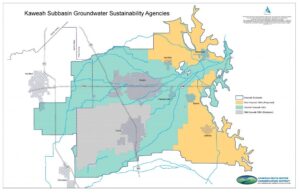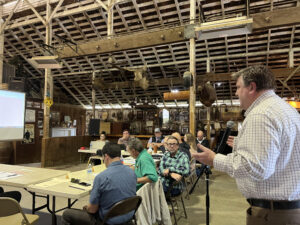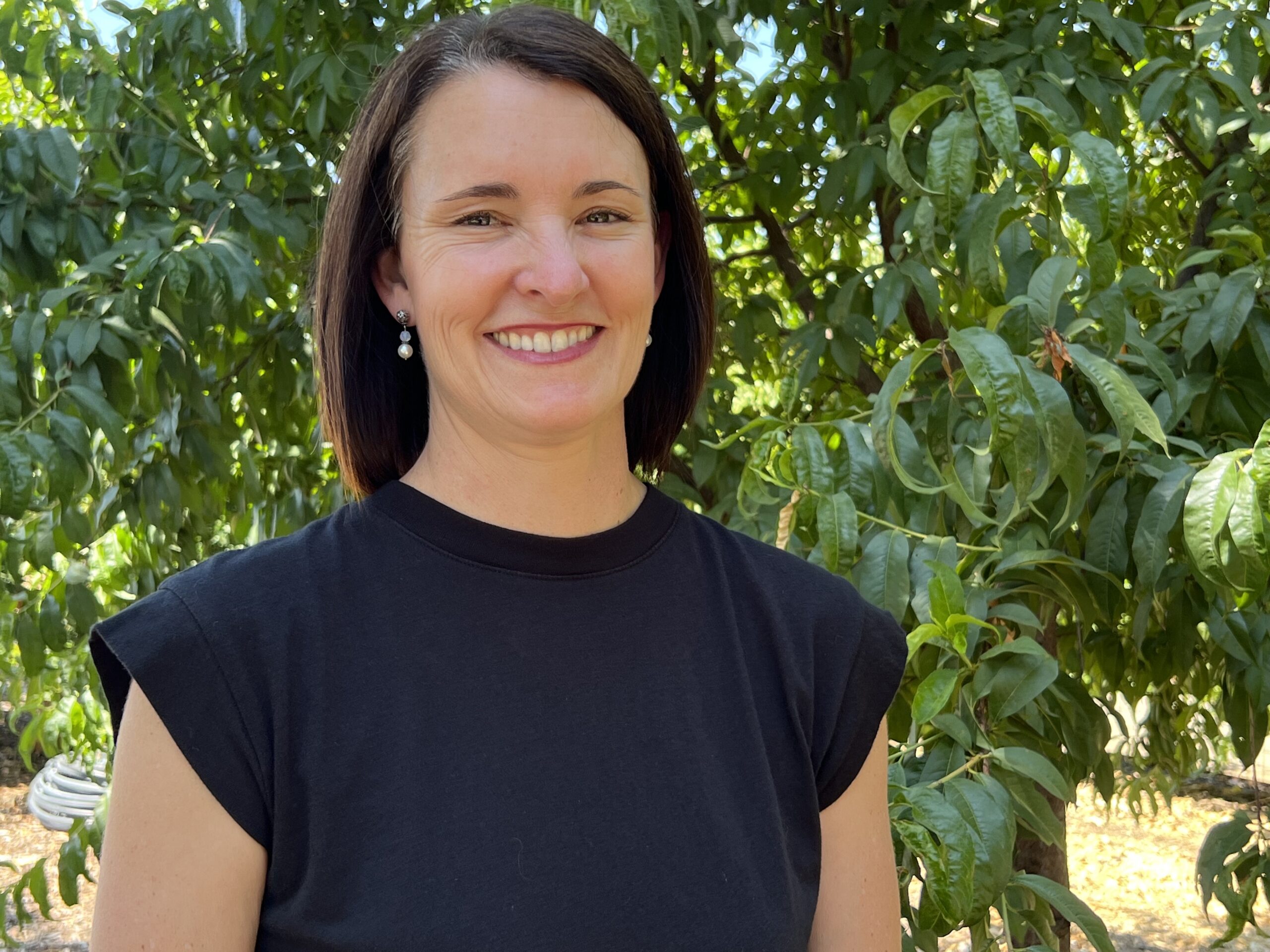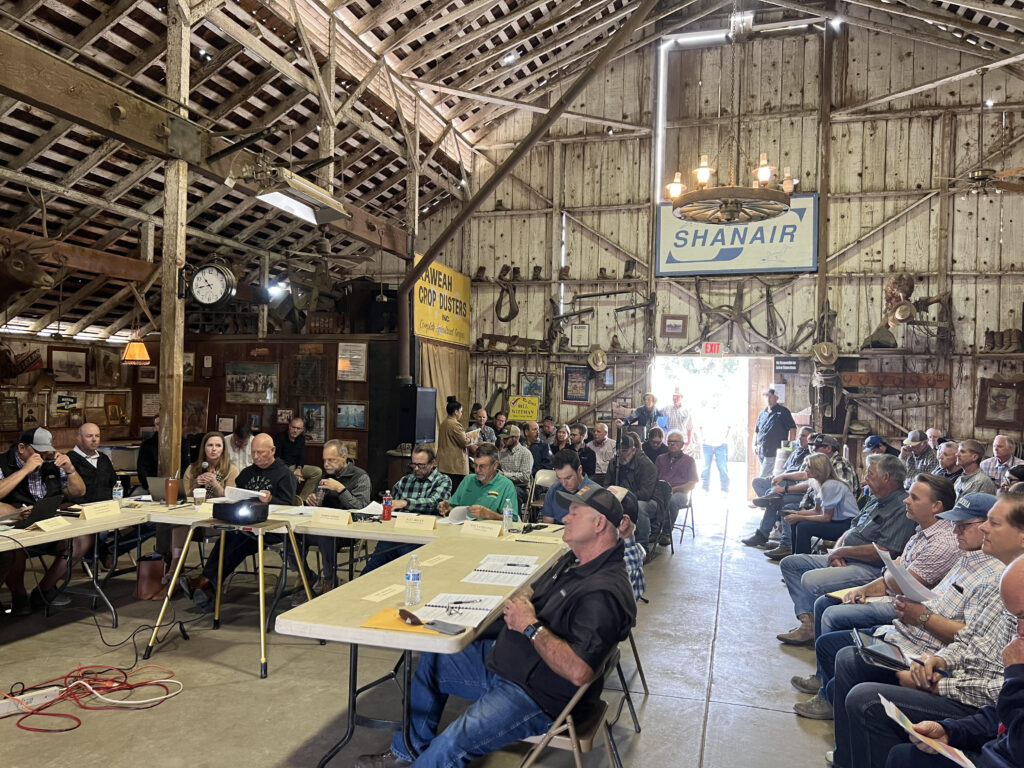San Joaquin Valley groundwater managers have had six years to come up with plans to bolster critically overdrafted aquifers. Yet, some appear still stuck at the starting line even as the specter of state intervention is marching ever closer.
In the Kaweah subbasin covering northern Tulare County, one groundwater agency is just now setting out to collect basic groundwater pumping data, to the intense frustration of farmers and other groundwater managers.
And after back-to-back marathon workshops and meetings in late October, the Greater Kaweah groundwater agency did not address concerns over its recently set pumping allotments, which other water managers have said are excessive.
Instead, board members discussed data collection, the GSA’s grower online dashboard and whether to set monetary penalties for farmers who exceed their pumping allotments.
The Greater Kaweah board will consider the penalties, between $150 and $250 per acre foot over allotments, at its Nov. 13 meeting.
Greater Kaweah’s efforts were seen as too little too late by its subbasin mates – the East and Mid-Kaweah groundwater sustainability agencies.
“It’s almost as if it is intentional to try and drag this out,” said Mike Hagman, General Manager of East Kaweah GSA. “They are trying to buy time. I just don’t know the ultimate purpose, except failure.”
Meanwhile, the state Water Resources Control Board, the enforcement arm of the Sustainable Groundwater Management Act (SGMA), is expected to begin the process of considering whether to put the Kaweah subbasin into “probationary status” beginning in June 2024.

Probation would mean state bureaucrats would require farmers to register their wells, mandate how much they could pump and issue fees and steep fines for going over allotments.
Groundwater agencies, formed in 2017, have had six years to develop plans and revise them based on Department of Water Resources findings. After two tries, DWR deemed the Kaweah subbasin’s plan “inadequate,” which is why it now faces review by the Water Board.
Can the plan be fixed before that review – with only eight months to go?
“That’s the million dollar question,” said Mark Larsen, general manager of Greater Kaweah GSA. “We are charging in that direction, to get straight with (the Water Board) prior to the hearing. Honestly, it is very tight but we’re not giving up.”
He felt the pumping data the GSA is seeking will help with coordination between all three groundwater agencies, something that’s absolutely required under SGMA.
“There’s been impatience that it’s not coming fast enough. But if we can get this done then we can focus on the future,” he said. Larsen only took the helm at Greater Kaweah last year and both Hagman and Fukuda said he’s been good to work with under trying circumstances.
Still, Hagman said the real issue comes down to pumping allotments, which Greater Kaweah has set at 1.87 acre feet per acre for its farmers.
That’s almost double the amount East Kaweah allowed its growers to pump. Both East and Mid-Kaweah each have multiple fees based on different amounts pumped and each has a long-established $500-per-acre-foot penalty for water that’s pumped above allocations.
“If they will not have a dialogue about (pumping) allocations, they are not coordinating,” Hagman said of Greater Kaweah.
Part of the challenge is, East and Mid-Kaweah have substantial amounts of imported surface water whereas a large chunk of Greater Kaweah has no imported water. Farmers in those areas are totally dependent on groundwater.
Mid-Kaweah GSA General Manager Aaron Fukuda commended Larsen for holding the workshops to educate board members, who he said have some “internal soul searching to do.”

But he agreed Greater Kaweah needs to face up to its groundwater reality before the state Water Board does it for them.
“This is not a standoff that we can all survive,” he said.
Greater Kaweah farmers know they will have to reduce pumping to adhere with SGMA’s deadline to bring aquifers into balance by 2040. But the GSA’s plan has been to ramp down pumping over time.
Its ramp-down plan, however, is too slow for the rest of the subbasin.
“We can’t wait. We need to move forward now,” East Kaweah’s Hagman said.
Share this:
- Click to share on Facebook (Opens in new window)
- Click to share on Twitter (Opens in new window)
- Click to share on LinkedIn (Opens in new window)
- Click to share on Reddit (Opens in new window)
- Click to share on Tumblr (Opens in new window)
- Click to share on Pinterest (Opens in new window)
- Click to share on Pocket (Opens in new window)
- Click to share on Telegram (Opens in new window)
- Click to share on WhatsApp (Opens in new window)
- Click to print (Opens in new window)









You must be logged in to post a comment.